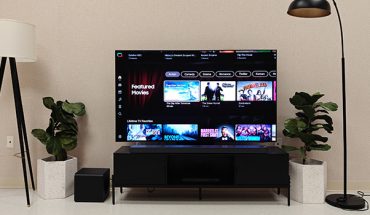New technology is being developed to digitize the sense of smell; turns out, there’s always something in the air. And new technology can sniff out and help detect all sorts of things, like viruses that cause COVID; pathogens that trigger other diseases, even genetic samples that help determine the presence or absence of animal life.
To anyone who suffers allergies from pollen or cat dander, it is no surprise that stuff floats around in the air. DNA, the genetic building block of life, is in that stuff. Canadian technologists and researchers are among those taking advantage of that fact by developing tools to sample the air for signs of disease, infection, even to protect endangered species.
Earlier this year, Elizabeth Clare, a molecular ecologist at York University in Toronto, reported in a leading medical research journal that environmental DNA from animals can be detected in air sampled indoors and out. It’s one thing to sniff the air near a zoo on such a project, as Clare did, but it is another to work in a tropical rainforest, or darkened rock cave (where she has also been). Technology, effort, and analysis let her team identify dozens of animals from the techno-sniffed air, and to her surprise, most air samples also contained human DNA.
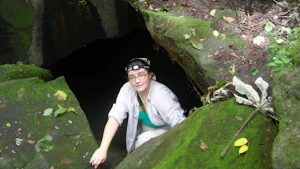
Elizabeth Clare, a molecular ecologist at York University, has worked on the development of air sniffing techniques that could detect animals, viruses, and other ‘somethings’ in the air, indoors and out. YouTube image.
Her experimentation demonstrated that even short sampling times (like five minutes) using low-powered air collection devices can produce positive PCR and sequencing outcomes for multiple animal species, and for multiple uses: by understanding the characteristics of air in the home, classroom, or workplace, medical diagnostics, ecological sampling, disease prevention, forensic analysis, security, and defence, as well as food quality and safety, could be enhanced.
(Technology-enabled sniffing, of course, has multiple meanings: this is not about network or packet sniffing, a technical process sometimes used to identify Internet traffic and data transmission. This is about techno-enabled sniffing that can identify human traffic and aerosol transmission. Of course, there can be serious data security and personal privacy implications either way.)
In a related but unconnected development, a Canadian artificial intelligence firm says it has developed technology to digitize the sense of smell and bring some control over the air quality of shared indoor spaces.
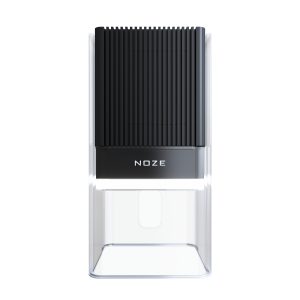
NOZE, the world’s first AI-powered air quality monitor designed to be the first line of defense against the airborne transmission of the coronavirus. Manufacturer supplied image.
Montreal-based AI startup Stratuscent has just launched a new smart device it’s calling NOZE, the world’s first AI-powered air quality monitor designed to be the first line of defense against the airborne transmission of the coronavirus.
Stratuscent’s technology tracks airborne markers known as VOCs, or volatile organic compounds; they are released by infected persons (in cases of coronavirus, influenza, and other airborne-spread diseases).
As well as airborne carriers of respiratory disease and other airborne contaminants, NOZE and its AI-fuelled algorithms can determine the quality context and content characteristics of indoor air, so it can quantify virus risk on a 10-point scale – from the risk of virus transmission (spread) to the probability of virus presence – and display its findings on a companion smartphone app.
“A big takeaway from the COVID-19 pandemic is that people rightfully want to know more about the indoor spaces they enter,” said Karim Aly, chief executive officer at Stratuscent of the need and motivation to develop such capabilities. “The same way that we have a fundamental expectation to drink clean water and eat clean food, our new normal is one where we will also have an expectation to breathe clean air regardless of where we are.”
Stratuscent’s technology has been made available to original equipment manufacturers globally for integration into a variety of smart products. Dedicated units are expected to ship in October.
Effective and efficient new tools and technologies to monitor indoor air and help keep families, students, employees, clients, and visitors safe from airborne infection are expected to have a more and more valuable role in our daily lives.
You could say they are about as valuable as the air that we breathe.
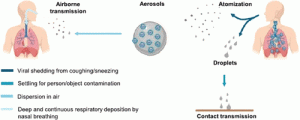
In their scientific paper, Detecting COVID-19 from Breath: A Game Changer for a Big Challenge, researchers Giorgia Giovannini, Hossam Haick, and Denis Garoli showed how virus transmission from person to person occurs through direct/indirect contact and airborne aerosol/droplet routes. Direct and airborne transmissions occur in short-range and extended distance/time, respectively. Inhaled airborne viruses are deposited directly onto the human respiration tract. Figure adapted with permission from ref (6), 2020, editor of the National Academy of Sciences. Copyright © 2021 The Authors. Published by American Chemical Society.
# # #
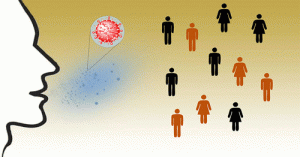
The Public Health Agency of Canada, the U.S. Centers for Disease Control and Prevention, the Environmental Protection Agency, the World Health Organization, among others, have all recognized the coronavirus is airborne so they have updated their information to include guidelines around airborne spread.
-30-



